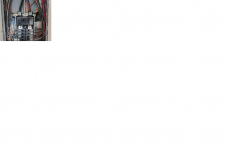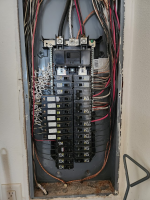A good SERVICE PANEL GROUND and CLEAN ROMEX connections will help - - -
I think the original electrician did the following when wiring the Electric Panel :
A] ran a braided #6 from the UFER ground to the panel, connected to screw 3.
B] ran a braided #6 from the copper water pipe to the neutral strip
C] ran a braided #6 from the metal GAS PIPE to the neutral strip
D] mixed the ROMEX bare-ground wires and the white-neutral wires on the neutral strip.
NOTE - see the attached diagram and refer to numbers 1, 2, 3, 4
Need to verify that screw 3 makes direct connection to screw 4 (the neutral strip)
Screw 2 cinches the NEUTRAL from the service drop.
Screw 3 cinches the COPPER cable from the UFER ground concrete foundation REBAR.
The Ground strip with Screw 1 is supposed to be just for bare ground wires from the ROMEX lines;
and there should be a metal bolt from the Ground strip to the Metal of the Electric Panel box.
The Neutral strip with Screw 4 is supposed to be just for white neutral wires from the ROMEX lines;
but if the Neutral strip is “floating on plastic”, then there should be a short BARE COPPER #4
wire from the left GROUND strip to the right NEUTRAL strip (to bond NEUTRAL to GROUND)


